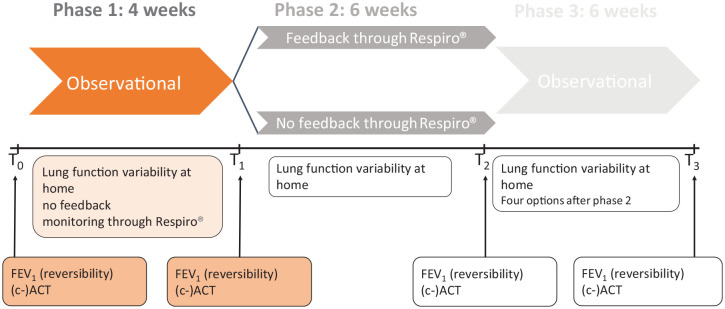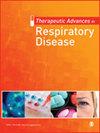下载PDF
{"title":"使用智能吸入器的未控制哮喘儿童的治疗依从性水平与吸入技术之间的相关性:IMAGINE研究。","authors":"Esther Sportel, Boony Thio, Kris Movig, Job van der Palen, Marjolein Brusse","doi":"10.1177/17534666251346363","DOIUrl":null,"url":null,"abstract":"<p><strong>Background: </strong>Asthma is a chronic condition with a high health and social burden in children. Although many well-studied effective therapies are available, because of suboptimal adherence and inhalation technique, asthma in children remains frequently uncontrolled. It is often assumed that adherence and technique are highly correlated items, but this assumption has not been thoroughly validated.</p><p><strong>Objective: </strong>This trial evaluates the correlation between adherence and inhalation technique and the association of patient-related factors with these two important parameters.</p><p><strong>Design: </strong>Observational phase I of the IMproving Adherence by Guiding INhalation via Electronic monitoring (IMAGINE) study, a three-phased Randomized Controlled Trial (RCT) in children with uncontrolled asthma.</p><p><strong>Methods: </strong>The observational phase I of the IMAGINE study was designed to determine the correlation between adherence and inhalation technique in pediatric subjects with uncontrolled asthma. During this observational study phase, adherence and inhalation technique were measured with a smart add-on device called Respiro<sup>©</sup> (Amiko, London). Patient-related factors were assessed either at baseline (e.g. characteristics of the patient), or during the study period (e.g. number of emergency room (ER) visits and daily salbutamol intake).</p><p><strong>Results: </strong>Of the 34 enrolled subjects, 6-18 years old, suffering from moderate to severe uncontrolled asthma, 32 successfully completed phase I. No significant correlation between adherence and inhalation technique was observed (<i>r</i> = -0.21; <i>p</i> = 0.234). Twenty-one percent of children had both good adherence and good inhalation technique. Children with good adherence had more often ⩾1 ER visits during follow-up, while poor inhalation technique was associated with younger age and lower height at baseline, and a higher daily salbutamol dosage intake and ⩾1 ER admission during follow-up.</p><p><strong>Conclusion: </strong>Our findings demonstrated no correlation between therapy adherence and inhalation technique, suggesting that these should be regarded as distinct and frequent pitfalls of inhaled medication use.We observed that inhalation technique was significantly associated with ER visits, rescue medication use, age, and height, while good adherence correlated with ER visits. Recognizing these factors allows pediatricians to identify risk profiles for poor inhalation technique and poor adherence, enabling more targeted and personalized interventions.<i>Trial registration:</i> NL-OMON25807.</p>","PeriodicalId":22884,"journal":{"name":"Therapeutic Advances in Respiratory Disease","volume":"19 ","pages":"17534666251346363"},"PeriodicalIF":3.0000,"publicationDate":"2025-01-01","publicationTypes":"Journal Article","fieldsOfStudy":null,"isOpenAccess":false,"openAccessPdf":"https://www.ncbi.nlm.nih.gov/pmc/articles/PMC12144389/pdf/","citationCount":"0","resultStr":"{\"title\":\"The correlation between the level of therapy adherence and inhalation technique in children with uncontrolled asthma using a smart inhaler: the IMAGINE study.\",\"authors\":\"Esther Sportel, Boony Thio, Kris Movig, Job van der Palen, Marjolein Brusse\",\"doi\":\"10.1177/17534666251346363\",\"DOIUrl\":null,\"url\":null,\"abstract\":\"<p><strong>Background: </strong>Asthma is a chronic condition with a high health and social burden in children. Although many well-studied effective therapies are available, because of suboptimal adherence and inhalation technique, asthma in children remains frequently uncontrolled. It is often assumed that adherence and technique are highly correlated items, but this assumption has not been thoroughly validated.</p><p><strong>Objective: </strong>This trial evaluates the correlation between adherence and inhalation technique and the association of patient-related factors with these two important parameters.</p><p><strong>Design: </strong>Observational phase I of the IMproving Adherence by Guiding INhalation via Electronic monitoring (IMAGINE) study, a three-phased Randomized Controlled Trial (RCT) in children with uncontrolled asthma.</p><p><strong>Methods: </strong>The observational phase I of the IMAGINE study was designed to determine the correlation between adherence and inhalation technique in pediatric subjects with uncontrolled asthma. During this observational study phase, adherence and inhalation technique were measured with a smart add-on device called Respiro<sup>©</sup> (Amiko, London). Patient-related factors were assessed either at baseline (e.g. characteristics of the patient), or during the study period (e.g. number of emergency room (ER) visits and daily salbutamol intake).</p><p><strong>Results: </strong>Of the 34 enrolled subjects, 6-18 years old, suffering from moderate to severe uncontrolled asthma, 32 successfully completed phase I. No significant correlation between adherence and inhalation technique was observed (<i>r</i> = -0.21; <i>p</i> = 0.234). Twenty-one percent of children had both good adherence and good inhalation technique. Children with good adherence had more often ⩾1 ER visits during follow-up, while poor inhalation technique was associated with younger age and lower height at baseline, and a higher daily salbutamol dosage intake and ⩾1 ER admission during follow-up.</p><p><strong>Conclusion: </strong>Our findings demonstrated no correlation between therapy adherence and inhalation technique, suggesting that these should be regarded as distinct and frequent pitfalls of inhaled medication use.We observed that inhalation technique was significantly associated with ER visits, rescue medication use, age, and height, while good adherence correlated with ER visits. Recognizing these factors allows pediatricians to identify risk profiles for poor inhalation technique and poor adherence, enabling more targeted and personalized interventions.<i>Trial registration:</i> NL-OMON25807.</p>\",\"PeriodicalId\":22884,\"journal\":{\"name\":\"Therapeutic Advances in Respiratory Disease\",\"volume\":\"19 \",\"pages\":\"17534666251346363\"},\"PeriodicalIF\":3.0000,\"publicationDate\":\"2025-01-01\",\"publicationTypes\":\"Journal Article\",\"fieldsOfStudy\":null,\"isOpenAccess\":false,\"openAccessPdf\":\"https://www.ncbi.nlm.nih.gov/pmc/articles/PMC12144389/pdf/\",\"citationCount\":\"0\",\"resultStr\":null,\"platform\":\"Semanticscholar\",\"paperid\":null,\"PeriodicalName\":\"Therapeutic Advances in Respiratory Disease\",\"FirstCategoryId\":\"3\",\"ListUrlMain\":\"https://doi.org/10.1177/17534666251346363\",\"RegionNum\":3,\"RegionCategory\":\"医学\",\"ArticlePicture\":[],\"TitleCN\":null,\"AbstractTextCN\":null,\"PMCID\":null,\"EPubDate\":\"2025/6/6 0:00:00\",\"PubModel\":\"Epub\",\"JCR\":\"Q2\",\"JCRName\":\"RESPIRATORY SYSTEM\",\"Score\":null,\"Total\":0}","platform":"Semanticscholar","paperid":null,"PeriodicalName":"Therapeutic Advances in Respiratory Disease","FirstCategoryId":"3","ListUrlMain":"https://doi.org/10.1177/17534666251346363","RegionNum":3,"RegionCategory":"医学","ArticlePicture":[],"TitleCN":null,"AbstractTextCN":null,"PMCID":null,"EPubDate":"2025/6/6 0:00:00","PubModel":"Epub","JCR":"Q2","JCRName":"RESPIRATORY SYSTEM","Score":null,"Total":0}
引用次数: 0
引用
批量引用
The correlation between the level of therapy adherence and inhalation technique in children with uncontrolled asthma using a smart inhaler: the IMAGINE study.
Background: Asthma is a chronic condition with a high health and social burden in children. Although many well-studied effective therapies are available, because of suboptimal adherence and inhalation technique, asthma in children remains frequently uncontrolled. It is often assumed that adherence and technique are highly correlated items, but this assumption has not been thoroughly validated.
Objective: This trial evaluates the correlation between adherence and inhalation technique and the association of patient-related factors with these two important parameters.
Design: Observational phase I of the IMproving Adherence by Guiding INhalation via Electronic monitoring (IMAGINE) study, a three-phased Randomized Controlled Trial (RCT) in children with uncontrolled asthma.
Methods: The observational phase I of the IMAGINE study was designed to determine the correlation between adherence and inhalation technique in pediatric subjects with uncontrolled asthma. During this observational study phase, adherence and inhalation technique were measured with a smart add-on device called Respiro© (Amiko, London). Patient-related factors were assessed either at baseline (e.g. characteristics of the patient), or during the study period (e.g. number of emergency room (ER) visits and daily salbutamol intake).
Results: Of the 34 enrolled subjects, 6-18 years old, suffering from moderate to severe uncontrolled asthma, 32 successfully completed phase I. No significant correlation between adherence and inhalation technique was observed (r = -0.21; p = 0.234). Twenty-one percent of children had both good adherence and good inhalation technique. Children with good adherence had more often ⩾1 ER visits during follow-up, while poor inhalation technique was associated with younger age and lower height at baseline, and a higher daily salbutamol dosage intake and ⩾1 ER admission during follow-up.
Conclusion: Our findings demonstrated no correlation between therapy adherence and inhalation technique, suggesting that these should be regarded as distinct and frequent pitfalls of inhaled medication use.We observed that inhalation technique was significantly associated with ER visits, rescue medication use, age, and height, while good adherence correlated with ER visits. Recognizing these factors allows pediatricians to identify risk profiles for poor inhalation technique and poor adherence, enabling more targeted and personalized interventions.Trial registration: NL-OMON25807.




 求助内容:
求助内容: 应助结果提醒方式:
应助结果提醒方式:


